Impact of Multichannel Customer Experience on Retention Rates
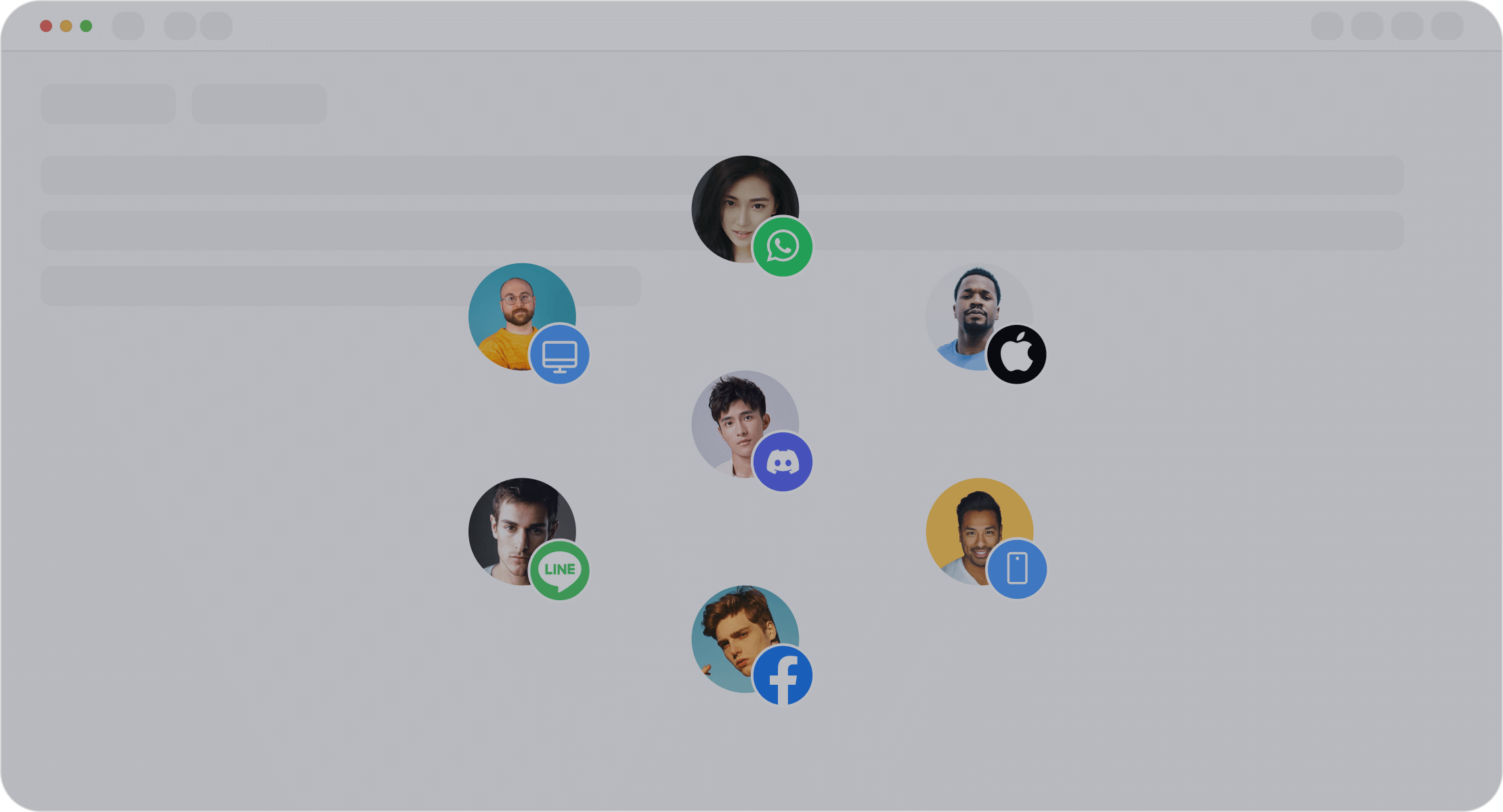
Businesses that invest in a strong multichannel customer experience see measurable gains in both retention and satisfaction. For example, Opay increased its customer satisfaction rate from 60% to 90% after integrating Sobot’s unified platform, demonstrating the power of seamless cx. Research shows that 35% of companies report improved loyalty through omnichannel engagement, while customers who interact across several channels are at least 1.25 times more valuable. Sobot AI helps organizations unify contact points, using innovation and technology to deliver consistent, data-driven cx that drives customer loyalty and satisfaction.
Multichannel Customer Experience and Retention
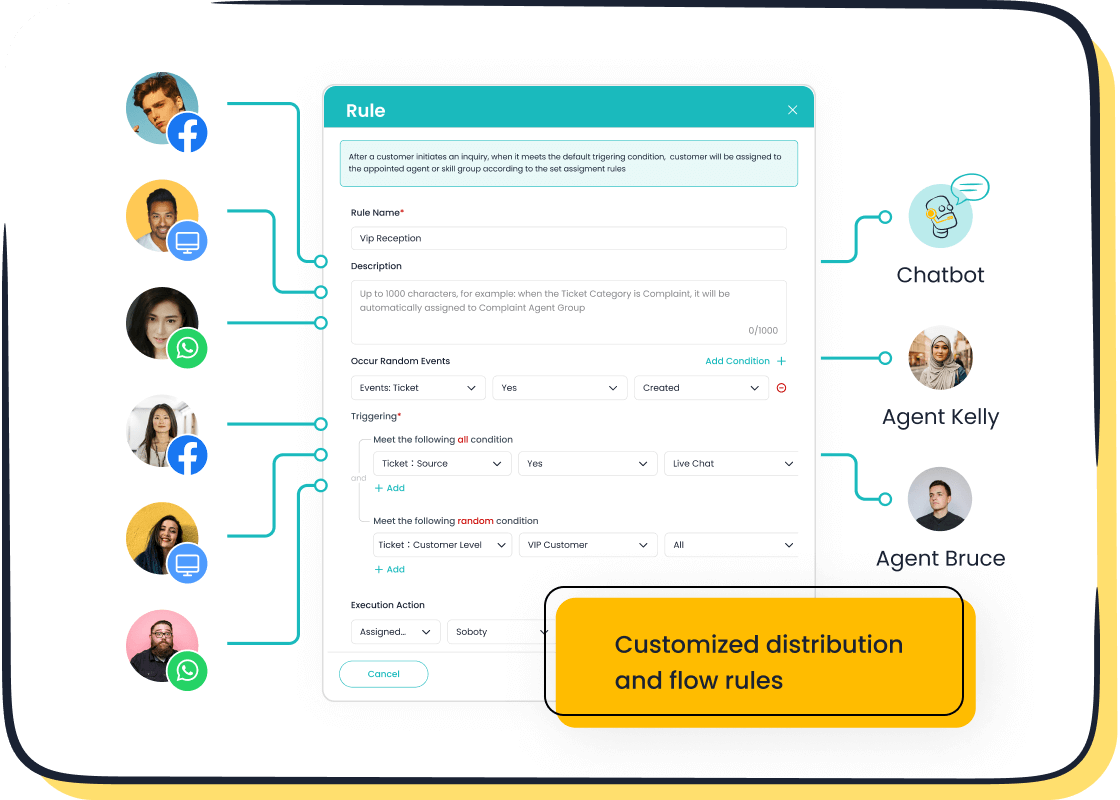
Direct Impact on Customer Satisfaction
A multichannel customer experience shapes how people feel about a brand. When companies offer support and communication across many channels, they meet customers where they are. This approach leads to higher satisfaction and stronger relationships. Research shows that omnichannel customer experiences drive purchase and engagement rates 250% higher than single-channel campaigns. Customer retention rates also rise by 90% when businesses use multichannel strategies. These numbers highlight the value of connecting with customers through their preferred platforms.
Companies that invest in effective onboarding see 86% of customers stay longer. Subscription renewals jump by 92% when onboarding is clear and helpful. Poor onboarding, on the other hand, causes frustration and churn. Engaging onboarding content boosts early product use by 55%, which leads to long-term retention.
Many brands use customer satisfaction metrics to measure the success of their multichannel marketing. These include Customer Effort Score (CES), Customer Health Score (CHS), Customer Lifetime Value (CLTV), Customer Churn Rate (CCR), Customer Satisfaction Score (CSAT), and Net Promoter Score (NPS). By tracking these metrics, companies can see how well their multichannel customer engagement works.
Sobot enables a seamless experience by unifying customer interactions across SMS, email, chat, and voice. Its AI chatbots handle up to 80% of routine inquiries, freeing agents to solve complex issues. This approach leads to a 25% increase in customer response rates and a 30% boost in conversion rates. The chart below shows how Sobot’s features drive measurable outcomes:
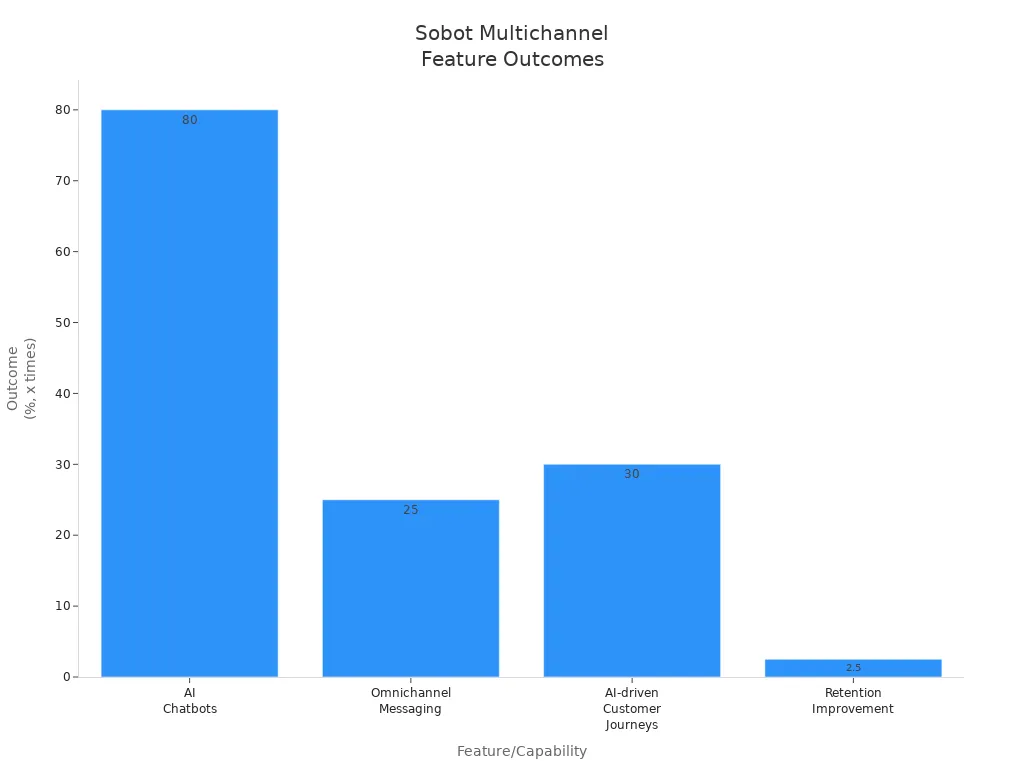
Opay, a leading financial service platform, used Sobot’s omnichannel solution to manage customer inquiries across social media, email, and voice. After implementation, Opay’s customer satisfaction rate soared from 60% to 90%. Operational costs dropped by 20%, and conversion rates increased by 17%. This real-world example demonstrates the power of a unified multichannel customer experience.
Building Loyalty Through Multiple Channels
Multi-channel customer engagement builds trust and loyalty. Customers want to interact with brands on their own terms, whether through phone, website, social media, live chat, SMS, or messaging apps. Studies show that brands with strong cross-channel marketing retain 89% of customers, compared to only 33% for those with weak strategies (Aberdeen Group). Customers who use multiple channels spend 30% more on average (Google). Businesses using at least three marketing channels see a 14.6% increase in sales (Omnisend). Over 72% of consumers prefer engaging with brands through multiple channels (Salesforce).
Academic research confirms that consistent service and pricing across channels lead to increased customer loyalty. When companies collaborate on price, service, and distribution, loyalty rises. Customers who receive a seamless experience across all touchpoints are more likely to return and recommend the brand.
Sobot’s omnichannel platform helps businesses deliver consistent messaging and service. Its unified workspace allows agents to track conversations and customer data in one place. AI-driven customer journeys use predictive analytics to personalize outreach, resulting in a 2.5 times higher retention rate compared to non-omnichannel approaches. Sobot’s multichannel marketing tools also enable targeted campaigns and quick feedback collection, further strengthening customer engagement.
A survey of 338 motor insurance customers found that people often use digital channels for information but complete purchases through personal channels like agents. This pattern shows the importance of integrated multichannel strategies. Customers switch between physical and digital channels, seeking information, innovation, and convenience.
Delta Airlines improved its customer satisfaction by using multichannel solutions. The company added app notifications, real-time flight updates, and easier rebooking options. These changes addressed customer pain points and increased loyalty. This example shows how multichannel customer experience can transform cx and drive increased customer loyalty.
What Is Multichannel Customer Experience?
Multichannel customer experience means giving customers several ways to connect with a business. Leading customer service authorities describe this as offering support and communication across platforms like websites, physical stores, mobile apps, and social media. This approach lets customers choose their preferred touchpoints, making it easier for them to get help and information. Businesses that use multichannel customer experience focus on being available wherever their customers are, which increases satisfaction and loyalty.
Key Channels in Customer Service
Today’s multi-channel customer engagement relies on a variety of touchpoints. The most common channels include:
- Web chat
- Mobile apps
- Social media platforms
- Messaging applications
- Voice calls
Sobot Live Chat provides multi-channel support by connecting all these touchpoints in one unified workspace. Agents can switch between web chat, email, social media, and voice without losing the conversation’s context. Sobot’s AI-powered chatbot handles routine inquiries across every channel, improving response times and efficiency. Intelligent routing directs each customer to the right agent, while voice recognition adds another layer of multi-channel support. The unified dashboard gives agents a complete view of every customer interaction, ensuring consistent multi-channel customer engagement.
Multichannel vs. Omnichannel
Many businesses use both multichannel and omnichannel support, but they are not the same. Industry experts highlight several key differences:
- Multichannel customer experience focuses on providing many separate channels for customer interaction. Each channel operates independently, so customers may need to repeat information when switching touchpoints.
- Omnichannel support integrates all touchpoints, creating a seamless journey. Customers can move between channels without restarting their experience.
- Multichannel aims for broad reach and quantity of channels, while omnichannel prioritizes consistency and quality of service.
- Multichannel customer engagement often requires managing each channel separately. Omnichannel uses unified data to personalize and automate the customer journey.
For example, with omnichannel support, a customer can start a chat and then switch to a phone call without repeating details. This integration leads to a smoother, more satisfying experience (Salesforce). Sobot’s platform supports both multi-channel support and omnichannel support, helping businesses deliver consistent, high-quality service across all touchpoints.
Benefits for Customer Satisfaction
Convenience and Accessibility
Multichannel marketing gives customers the freedom to choose their preferred way to connect. Companies that offer multi-channel customer engagement—through phone, email, chat, social media, and apps—make it easy for customers to reach support. This approach saves time and reduces effort, leading to a positive experience. Research shows that 71% of younger customers prefer calling for complex issues, while others want live chat or messaging. Sobot Live Chat supports all these channels in one place, so agents can respond quickly and keep track of every conversation. Customers enjoy a consistent experience, no matter which channel they use. This level of accessibility demonstrates a company’s commitment to enhancing customer satisfaction and loyalty.
Customers expect to find help easily and get answers fast. Multi-channel support meets these expectations by making service available anytime, anywhere.
Personalization and Consistency
Personalization and a consistent experience across channels are key to multi-channel customer engagement. Studies reveal that 71% of customers expect personalized messaging, and 76% feel frustrated when it is missing. Companies that deliver consistent service and personalized experiences see higher loyalty and satisfaction. Sobot’s unified workspace and AI tools help agents recognize customer preferences and history, so every interaction feels tailored. This approach builds trust and encourages repeat business. Multi-channel support ensures that customers never have to repeat themselves, creating a seamless journey from start to finish.
- 62% of business leaders report improved retention due to personalization.
- Customers are willing to spend 38% more with brands that get personalization right.
- Consistent service across all touchpoints strengthens brand identity and customer loyalty.
Data-Driven Insights
Multichannel marketing generates valuable data from every customer interaction. Companies use this information to understand preferences, predict needs, and improve service. Sobot Live Chat’s analytics evaluate over 150 indicators, helping businesses spot trends and optimize support. AI-driven insights allow for real-time adjustments, reducing wait times and improving cx. Predictive analytics help companies anticipate issues and offer proactive solutions. This data-driven approach leads to enhanced customer experience and higher satisfaction.
| Benefit | How Multichannel Delivers Value |
|---|---|
| Unified customer profiles | Combines data from all channels |
| Targeted campaigns | Uses preferences for personalized messaging |
| Faster resolutions | AI and analytics speed up support |
| Seamless transitions | Maintains context across channels |
Multi-channel customer engagement, powered by tools like Sobot, ensures that every customer receives a positive experience, driving retention and satisfaction.
Sobot Solutions for Multichannel Success
Live Chat for Seamless Engagement
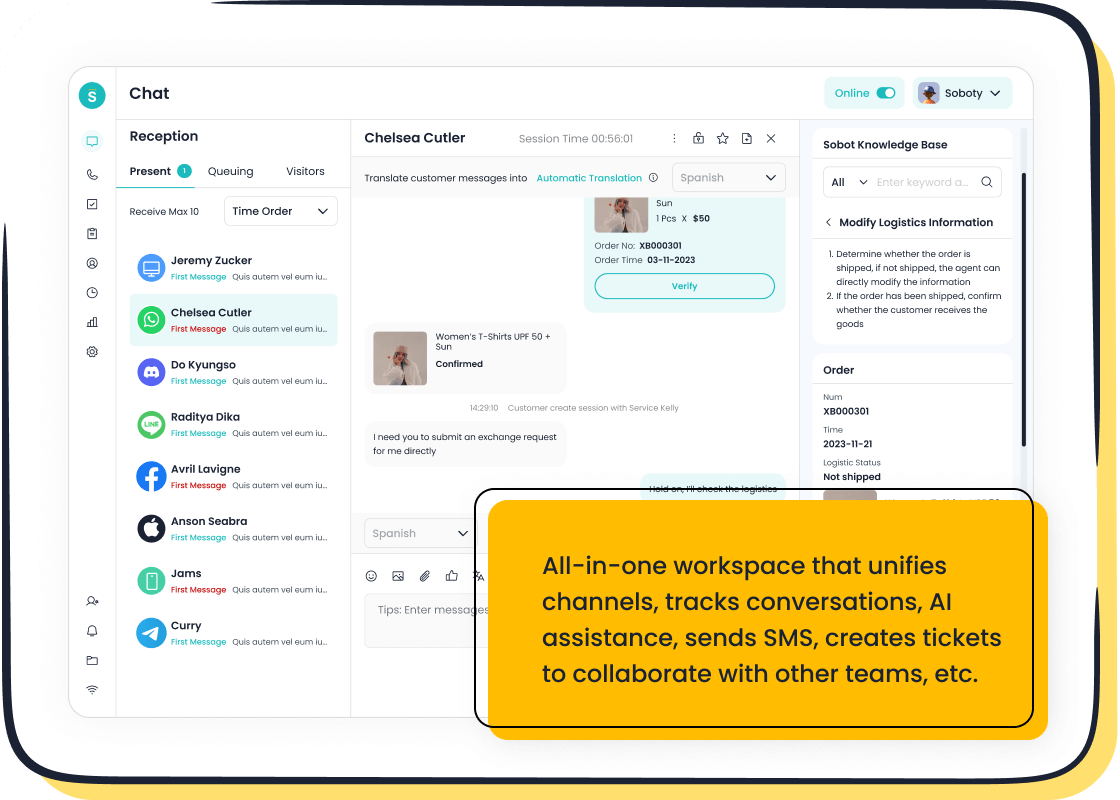
Sobot’s Live Chat stands out as a core tool for multi-channel customer engagement. The platform brings together website chat, social media, email, and messaging apps into one unified workspace. Agents can respond to customers in real time, switching between channels without losing context. Sobot’s AI chatbot, powered by ChatGPT, handles routine questions and supports multiple languages. This ensures every customer receives fast, accurate help in their preferred language.
Best practices for live chat include unified data management, consistent communication, and real-time support. Sobot’s platform centralizes customer data, allowing agents to personalize each interaction. The system also offers self-service options, so customers can find answers instantly. These features help businesses deliver a seamless experience and boost customer satisfaction.
| Best Practice Aspect | Description |
|---|---|
| Unified Data Management | Centralizes customer data for a single view |
| Consistent Communication | Maintains uniform messaging across all channels |
| Real-Time Support | Provides immediate assistance through live chat and AI chatbots |
| Personalization | Uses AI and CRM data to tailor interactions |
Omnichannel Platform Integration
Sobot’s Omnichannel Solution integrates WhatsApp, SMS, social media, email, phone, and chat into a single platform. This integration allows customers to move between channels without repeating information. The platform supports customizable workflows, advanced AI responses, and multilingual communication. Businesses can monitor engagement metrics and adapt to changing customer preferences.
Omnichannel integration brings several benefits compared to single-channel approaches. Customers enjoy seamless transitions and consistent branding. Unified data enables personalized service and relevant recommendations. Brands with omnichannel strategies retain up to 89% of customers, while single-channel approaches see lower retention rates. Operational efficiency improves as AI-driven automation reduces response times and costs.
| Aspect | Omnichannel Integration Benefits | Single-Channel Approach Limitations |
|---|---|---|
| Seamless Interaction | Customers switch channels without repeating information | Fragmented experiences |
| Data Synchronization | Unified customer data for personalized service | Repetitive inquiries, less personalization |
| Customer Retention | Up to 89% retention rate | Lower retention |
| Operational Efficiency | Reduced response times and costs | Siloed data, manual processes |
Real-World Results (Opay Case)
Opay, a leading financial service platform, adopted Sobot’s omnichannel solution to manage high volumes of customer interactions. The company unified social media, email, and voice channels, streamlining support and marketing. After implementation, Opay’s customer satisfaction rate jumped from 60% to 90%. Operational costs dropped by 20%, and conversion rates increased by 17%. The WhatsApp Business integration achieved an 85% message reading rate, showing the power of targeted multi-channel customer engagement.
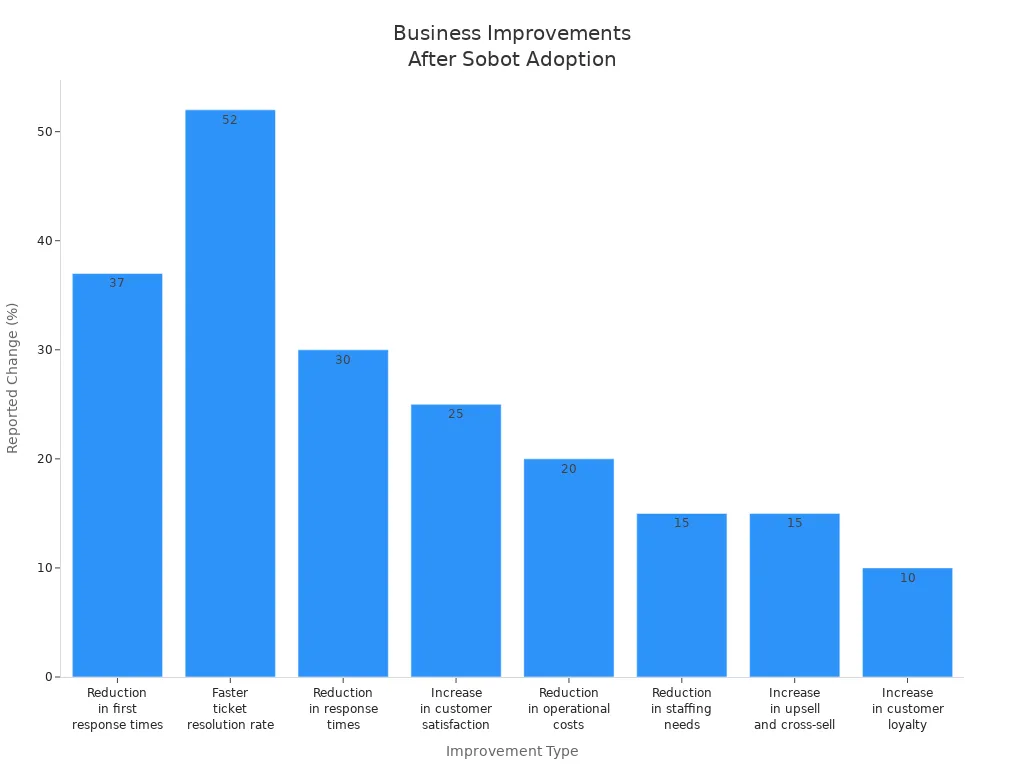
Sobot’s solutions help businesses achieve measurable improvements. Companies report a 37% drop in first response times, 52% faster ticket resolution, and a 25% increase in customer satisfaction. These results highlight the value of a unified platform for multi-channel customer engagement.
Overcoming Multichannel Challenges
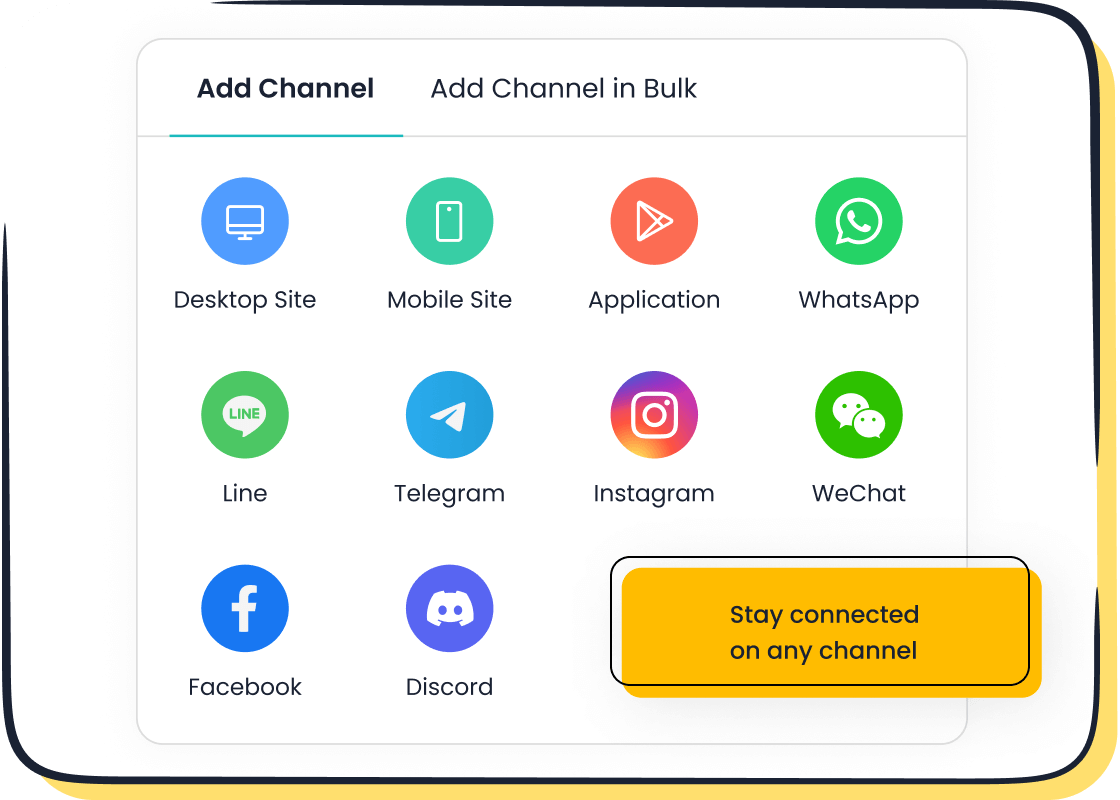
Businesses often face several challenges when building a strong multichannel customer experience. These include data silos, inconsistent messaging, and agent workload. Addressing these issues is key to delivering high-quality customer service and improving retention.
Data Integration
Many companies struggle to connect data from different channels. Disconnected systems can lead to incomplete customer profiles and slow response times. Sobot solves this by offering an omnichannel unified access system. This platform brings together chat, calls, WhatsApp, and more into a single workspace. Centralized processing ensures that customer data stays consistent and up to date. AI-powered engagement tools help agents respond quickly and accurately. Companies that use unified data platforms see operational efficiency improve by up to 100%. To succeed, businesses should:
- Develop a clear customer experience plan.
- Implement the plan across all channels.
- Train employees to use real-time customer data.
Consistent Messaging
Maintaining a unified brand voice across all channels is essential. Inconsistent messaging can confuse customers and weaken trust. Companies should train employees on brand guidelines and use content calendars to plan communications. Regular team meetings help align messaging and prevent conflicts. Sobot’s unified workspace supports consistent communication by giving agents access to updated brand information and templates. Best practices include:
- Creating comprehensive brand guidelines.
- Using centralized communication tools.
- Adapting messages for each channel while keeping the same brand voice.
Agent Training and Efficiency
Well-trained agents are vital for effective multichannel service. Training should cover both technical skills and soft skills like empathy and problem-solving. Sobot’s platform supports agent training with real-time access to customer data and AI-powered suggestions. Effective methods include on-the-job training, e-learning, and role-playing. The table below shows key training types and their focus areas:
| Training Type | Focus Area |
|---|---|
| Soft skills | Communication, empathy |
| Technology training | CRM, call center tools |
| Multichannel support | Phone, email, chat, social media |
Empowered agents resolve issues faster, leading to higher customer satisfaction and loyalty.
Action Steps for Better Customer Experience
Mapping the Customer Journey
Businesses achieve better results when they map the customer journey. This process starts by identifying every touchpoint where customers interact with the brand. Companies should connect digital and offline channels to create seamless experiences. For example, a customer might start with a website chat, move to email, and finish with a phone call. Mapping these steps helps teams understand customer preferences and pain points. Sobot’s unified workspace allows agents to track each interaction, making it easier to deliver consistent cx. By using analytics, companies can see which channels customers use most and adjust their multichannel marketing strategy to match real behaviors.
Tip: Build an audience communication matrix to match customer segments with their preferred channels and message types.
Leveraging Feedback
Customer feedback drives improvement in multichannel marketing. Companies should collect feedback from surveys, social media, and direct conversations. Sobot’s analytics tools help businesses analyze feedback from all channels in one place. By applying sentiment analysis, teams can spot trends and address issues quickly. For instance, if customers show a preference for live chat over email, businesses can invest more in that channel. Regular feedback analysis ensures that the multichannel marketing approach stays aligned with customer preferences and expectations.
| Feedback Source | Insights Gained |
|---|---|
| Surveys | Satisfaction, pain points |
| Social Media | Real-time reactions, trends |
| Direct Chat | Immediate concerns, preferences |
Continuous Improvement
Continuous improvement keeps the customer experience strong. Companies should monitor key metrics like customer satisfaction and engagement. Sobot’s analytics dashboard tracks these numbers and highlights areas for growth. Teams can use A/B testing to refine messages and workflows. Regular check-ins help align cx goals with business objectives. By reviewing performance and acting on feedback, businesses can optimize their multichannel marketing strategy. This approach ensures that customer preferences guide every update, leading to higher retention and satisfaction.
Note: Start with select customer journeys, apply templates, and scale successful strategies across all channels.
A strong multichannel customer experience leads to higher retention rates and greater satisfaction. Companies like Opay have seen customer satisfaction rise by 30% after adopting unified solutions such as Sobot. To enhance customer experience, businesses should:
- Analyze customer preferences using data analytics.
- Integrate all communication channels for seamless transitions.
- Personalize every interaction based on customer history.
- Keep branding and messaging consistent across platforms.
- Provide proactive support and train staff for multi-channel service.
- Monitor engagement metrics and optimize strategies.
- Ensure data privacy and stay updated with new technologies.
Sobot’s platform helps companies achieve these goals. The future of customer engagement will rely on innovation, data-driven insights, and seamless experiences across every channel.
FAQ
What is a multichannel customer experience?
A multichannel customer experience allows customers to interact with a business through several platforms, such as chat, email, social media, and phone. Companies like Sobot help unify these channels, making it easier for customers to get support and boosting customer retention rates.
How does a multichannel customer experience improve customer retention?
Businesses that use a multichannel customer experience see higher customer retention. For example, Opay increased its satisfaction rate from 60% to 90% after adopting Sobot’s unified platform. Customers stay loyal when they can reach support through their preferred channels.
What channels does Sobot support for multichannel customer experience?
Sobot supports web chat, mobile apps, WhatsApp, Facebook, Instagram, Telegram, Discord, email, and voice calls. This wide range of channels ensures that businesses can meet customers wherever they are, improving both customer retention and satisfaction.
Why is data integration important in a multichannel customer experience?
Data integration keeps customer information consistent across all channels. Sobot’s unified workspace combines chat, calls, and social media data, helping agents deliver fast, accurate service. Companies with integrated data see up to 100% improvement in operational efficiency.
How can businesses measure the success of their multichannel customer experience?
Companies track metrics like Customer Satisfaction Score (CSAT), Net Promoter Score (NPS), and Customer Retention Rate. Sobot’s analytics dashboard evaluates over 150 indicators, helping businesses optimize their multichannel customer experience and improve customer retention.
Tip: Regularly review analytics to spot trends and adjust your multichannel customer experience strategy for better retention.
See Also
Ways Chatbots Enhance Customer Experience In Online Shopping
Top Ten Strategies To Improve Live Chat Support Quality
Ten Essential Actions For Deploying Omnichannel Contact Centers
Comprehensive Overview Of Omnichannel Software For Call Centers
